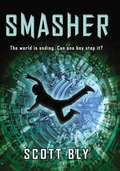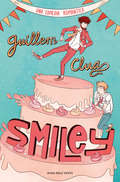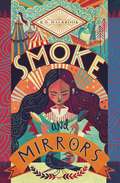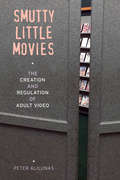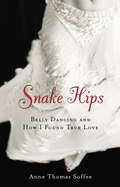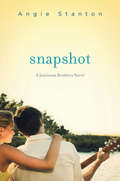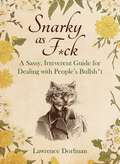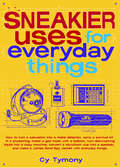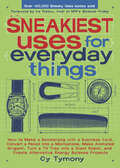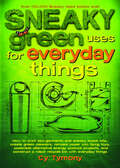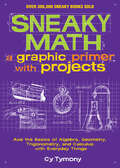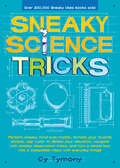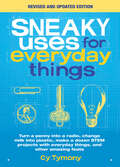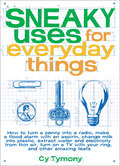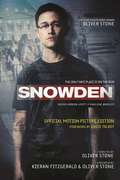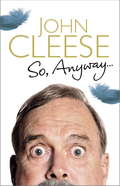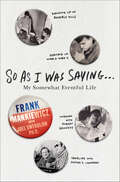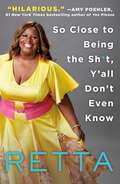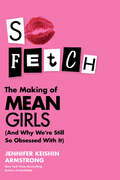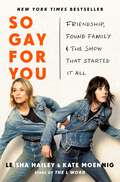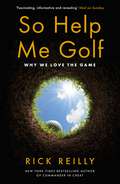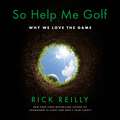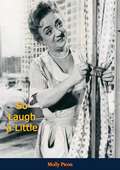- Table View
- List View
Smasher
by Scott BlyIn this riveting suspense thriller, two children race the clock to stop a futuristic murderer and his plan to enslave the world. In thirty days, a cold-hearted corporate tycoon will unleash a deadly biological computer virus on the entire world. As the public eagerly awaits his invention that promises ultimate relaxation, harmony, and community, the evil big-business sorcerer plans to put an end to freedom. Can he be stopped? The world's only hope is if Charlie, a math genius with otherworldly skills, and Geneva, a robotic girl from the future, can team up to track down some very dark secrets. With a method that uses atomic particles, Geneva and Charlie use "Smasher" to break through the walls of time. They travel to find an unlikely solution. But will it work? Fresh, unique, and gripping, this page-turner also celebrates the power of love, hope, and friendship as it also raises provocative questions about technology, progress, and the nature of persecution.
Smiley
by Guillem CluaSmiley és una història d'amor en lletres majúscules. Una llegenda japonesa diu que quan dues persones estan destinades a estar juntes, un fil vermell invisible lligat al dit petit de la mà esquerra les uneix des del dia del seu naixement. Aquest fil no es pot trencar, i pot lligar-les per sempre, encara que siguin molt lluny l'una de l'altra i malgrat que puguin ser molt diferents. Aquest sembla el cas de l'Àlex i el Bruno, els protagonistes de la comèdia romàntica que ha emocionat milers d'espectadors arreu del món. Segurament no es fixarien mai l'un en l'altre, però un equívoc farà que el que ha començat com una cita qualsevol els acabi canviant la vida per sempre. Smiley és una història d'amor en lletres majúscules. Fa riure i emociona. Mostra les pors a les quals ens enfrontem quan ens enamorem i les contradiccions de les relacions afectives dins de la comunitat gai, marcades per l'influx de les noves tecnologies i les aplicacions de cites online. I, a la vegada, és una petita viquipèdia de l'ambient barceloní i un homenatge a les comèdies romàntiques de tota la vida, de Nora Ephron a Howard Hawks. Smiley és tot això i molt més, però per sobre de tot, és un cant a l'amor en totes les seves formes. Guillem Clua va estrenar Smiley, una història d'amor el 2012 a la diminuta Sala Flyhard de Barcelona. Interpretada per Ramon Pujol (Àlex) i Albert Triola (Bruno) i amb direcció de l'autor, l'obra va estar en cartell a diferents teatres de la ciutat i en gira per Catalunya gairebé tres anys. La benedicció del públic (d'allò més divers: parelles heterosexuals, grups d'àvies, famílies senceres...) va venir acompanyada de crítiques entusiastes i tota mena de reconeixements. Va fer temporada a Madrid i des d'aleshores ha voltat per tot el món en diverses produccions internacionals, de Santiago de Xile a Atenes, de Miami a Berlín, de Nàpols a Nova York. Les últimes ciutats on s'ha pogut veure són Brisbane (Austràlia) i Singapur. Smiley s'ha convertit així en un fenomen global, capaç de traslladar al mainstream una comèdia romàntica protagonitzada per dos homes, amb final feliç i petó de pel·lícula. Les relacions de parella, però, evolucionen. Algunes milloren i altres s'acaben... o es converteixen en tota una altra cosa. Què va ser de l'Àlex i el Bruno després d'aquell happy ending? Van aconseguir superar les seves diferències i formar una parella estable? Van ser monògams o van iniciar una relació oberta? Feliços o infeliços? Smiley, després de l'amor, estrenada a l'Aquitània Teatre el 2020, respon a totes aquestes preguntes i moltes més, perquè han canviat moltes coses des d'aquella primera cita del 2012. Barcelona ja no és la mateixa ciutat, i l'Àlex i el Bruno... tampoc: ara els preocupen la crisi dels quaranta, el matrimoni, el final de la joventut i la pèrdua de la innocència. Aquesta edició reuneix elstextos de Smiley, una història d'amor i Smiley, després de l'amor. I qui ho sap, potser l'any 2030 ens tornem a trobar amb l'Àlex i el Bruno amb una tercera part que molts espectadors i lectors ja esperen amb impaciència.
Smoke and Mirrors
by K. D. Halbrook“The novel’s wistful prose and a relatable search for the Light will be rewarding for readers who can see in the Smoke any number of metaphors for the things that haunt us.” —BCCB (starred review) “A Wrinkle in Time-inspired adventure…Halbrook’s writing is artful.” —Kirkus Reviews “In K.D. Halbrook’s gorgeous prose, readers will be drawn immediately into the Cirque, but more importantly, they’ll be drawn into Sasha’s heart. This is a story to savor.” —Kathi Appelt, National Book Award finalist and Newbery Honor–winning author of The Underneath and Keeper “Adventure and magic unfold in this captivating story.” —School Library Connection “A fairy-tale atmosphere wafts through Halbrook’s story of magic, love, belonging, and circus...Enchanting.” —Booklist Circus Mirandus meets Cartwheeling in Thunderstorms in this beautifully written fantasy novel about a girl who must face her fears in order to right a terrible wrong, confront what it means to be different, and discover her own power.Smoke has come to the Cirque Magnifique. And Sasha Brown is sure it is her fault. Sasha has always loved the Cirque, a place filled with sequined costumes, dazzling spotlights, and magnificent tents. But when she starts fifth grade with the Islanders—the ordinary folk from the other side of the Island—for the first time, she’s not so sure she wants to be a Cirque kid. She starts to question her home and her Cirque family. Is the magic real? Are the stories even true? As the bullying by the Island kids gets worse, swirling blue-gray Smoke appears. One night in the big tent, Sasha’s dad performs, twisting his body through the air as the lights dance. Sasha is supposed to be helping, but instead she sits beneath the bleachers, seething. She has wished for the Smoke to come and make it all disappear: the Cirque, her family, the Island with its mean Island kids. And the Smoke does come. As Sasha watches her dad, he flips and raises his arms out for the bar that is supposed to meet him, his bright grin confident and sure. But there is only air…and Smoke. Both of Sasha’s parents disappear that night, and it’s all Sasha’s fault. What can she do but try and find them?
Smutty Little Movies: The Creation and Regulation of Adult Video
by Peter AlilunasIn the late 1970s, the adult film industry began the transition from celluloid to home video. Smutty Little Movies traces this change and examines the cultural and legal efforts to regulate, contain, limit, or eradicate pornography. Drawing on a wide variety of materials, Smutty Little Movies de-centers the film text in favor of industry histories and contexts. In so doing, the book argues that the struggles to contain and regulate pleasure represent a primary starting point for situating adult video's place in a larger history, not just of pornography, but of media history as a whole.
Snake Hips: Belly Dancing and How I Found True Love
by Anne Thomas SoffeeThis hilariously uplifting memoir follows an Arab American woman's merry life as she shimmies her way from getting dumped by her tattoo-artist boyfriend to coming to grips with being single, ample, and 30. Feeling lost and heartbroken, Anne Thomas Soffee moves back home to Richmond, Virginia. Against the wishes of her extended family and friends, she enrolls in a belly dancing class hoping to heal her heart and reconnect with her Lebanese roots. Her life is never the same after she discovers the riotous world of American belly dancing, a warm and welcoming subculture where younger and thinner are not necessarily better. Wildly funny adventures ensue as a newly confident Soffee embarks on romantic adventures with a domineering sheik and a beautiful Lebanese boy-next-door. Among the zils (finger cymbals) and thrills of attending classes and performing in moose lodges and county fairs, Soffee is surprised to find happiness and true love along the way. This replaces 1556524587.
Snapshot: A Jamieson Brothers Novel
by Angie StantonOne kiss will change Marti's summer . . . forever. Marti Marti just wants a normal life. After dealing with her irresponsible rock-legend father and absentee mother, she only wants some peace . . . and fun. And that includes a summer at an exclusive arts camp. Adam For Adam, a normal life is not possible—not when he is the lead guitarist in a rock band with his brothers. So he's thrilled to finally have an opportunity to disguise himself and live like a normal teenager at summer camp. And when Adam meets Marti, sparks fly. Between romantic bonfires and stolen kisses, they are inseparable. Then Marti discovers who Adam truly is, and her world is turned upside down. Ever since her father nearly ruined her life, she vowed never to fall for a rocker. But when tragedy strikes, Marti is forced to look within. And she discovers that maybe falling in love with a rock star is not so crazy after all.
Snarky As F*ck: A Sassy, Irreverant Guide for Dealing with People's Bullsh*t
by Lawrence DorfmanLearn how to become the most glorious a**shole the world has ever seen. Are you tired of everyone&’s bullsh*t? Responding to their dumba** questions? Making boring small talk and offering robotic replies? Can&’t take one more monotonous, people-pleasing conversation with a distant family member or a friend&’s friend? If you have no f*cks left to give and want to dish out some serious snark, grab a copy Snarky as F*ck, the premiere guide to all things sarcastic and sardonic. Explore topics such as: Sex and Romance (Responses to D*ck Pics, Mansplaining, and More) Geography (Snarkiest States in the US!) 21st Century Snark (Curse Word Definitions, Inspirational Bullsh*t, etc.) In the Workplace (Snarky Replies, Sotto Voce Things to Say to Your Boss) Family, Friends, and other Influencers (Greeting Cards for Bastards, and Insults for Around the Dinner Table!) Movies, Television, and Music (&“I&’m clapping because it&’s finished, not because I like it.&”) Politics and Government (Presidential Insults and Your New Favorite Game: Match the Scandal!) In the News (Florida Man, Karen and Brad, Idiots on Wheels, et al) Hear wit, sarcasm, and offhanded comments from masters like Dorothy Parker, Groucho Marx, H. L. Mencken, Oscar Wilde, Robert Benchley, George Bernard Shaw, Jules Feiffer, Bill Hicks, Bill Maher, Phyllis Diller, Édith Piaf, W. C. Fields, Mark Twain, Voltaire, Charles Bukowski, to name a few. This lofty tome promises to fulfill the need to chuckle, guffaw, titter, groan, and belly laugh as readers dip in and out of the great minds in literature, comedy, movies, music, and more. Proceed with caution, but know you&’ll come out the other side one snarky motherf*cker, ready to take on the world, one idiot at a time.
Sneakier Uses for Everyday Things: Power Devices With Your Plants, Modify High-tech Toys, Turn A Penny Into A Battery, And More (Sneaky Books #2)
by Cy TymonyThe author of Sneaky Uses for Everyday Things is back with an all-new compendium of creative inventions you can make at home. Did you know that your standard issue of Sports Illustrated can be turned into more than twenty useful gadgets? In Sneakier Uses for Everyday Things, Cy Tymony reveals how an ordinary magazine can become many extraordinary gadgets such as a compass, hearing aid, magnifier, peashooter, and bottle opener. Sneakier Uses for Everyday Things covers forty educational and unique projects that anybody can successfully complete with simple household items. The book includes a list of necessary materials, detailed sketches, and step-by-step instructions for each gadget and gizmo. Among the sneaky schemes are: * Creating a electroscope out of a glass jar * Turning a drinking cup into a speaker * Using an AM radio as a metal detector * Making a spy gadget jacket with over twenty individual sneaky uses ranging from a siren and whistle to a walkie-talkie and voice recorder
Sneakiest Uses for Everyday Things: How to Make a Boomerang with a Business Card, Convert a Pencil into a Microphone, Make Animated Origami, Turn a TV Tray into a Giant Robot, and Create Alternative Energy Science Projects (Sneaky Books #3)
by Cy TymonyThe third volume in the Sneaky Uses series features fifty all-new amazing projects made from ordinary household items. Master of homemade inventions Cy Tymony is back with the absolute Sneakiest Uses for Everyday Things! Would-be inventers, junk drawer aficionados, and science-fair parents rejoice as Cy helps you bring out your inner MacGyver. In these pages you will learn how to turn a piece of paper into a Frisbee, a business card into a boomerang, a TV tray into a robot, and more. Beginning with a complete list of materials and some sneaky science fun-damentals, Cy presents easy-to-follow step-by-step instructions paired with helpful illustrations. Most projects will be completed in just minutes using common items found around the house.
Sneaky Green Uses for Everyday Things: How to Craft Eco-Garments and Sneaky Snack Kits, Create Green Cleaners, Remake Paper Into Flying Toys, Assemble Alternative Energy Science Projects, and Construct a Robot Recycle Bin with Everyday Things (Sneaky Bks. #6)
by Cy TymonyThe author of the Sneaky Uses series shares creative ways to go green with forty projects that help you reuse, recycle, conserve energy—and have fun! In Sneaky Green Uses for Everyday Things, Cy Tymony combines his sneaky science known-how with Earth-friendly techniques to offer an all-new volume of easy, fun, and practical projects. With step-by-step instructions and illustrations, you&’ll learn how to conserve energy and reduce waste around the home while enjoying the fun of tinkering. With this volume, you can turn ordinary household items into: · A Solar Power Generator · A Robot Recycle Bin · A Sneaky Green Eco-Hat · Animated Origami · And much more! &“Thank you, Cy, for reinvigorating those creative juices [and] opening up the world of tinkering and creativity to a whole new generation of hobbyists looking to get their hands dirty with new and exciting projects." —Ira Flatow, host of NPR's Science Friday
Sneaky Math: A Graphic Primer with Projects (Sneaky Books #9)
by Cy Tymony&“By capitalizing on these real-world applications, Tymony helps conquer much of the fear and dread associated with traditional math lessons.&” (Booklist) Cy Tymony, author of the best-selling Sneaky Uses series, brings his unique, fun hands-on learning approach to all things math. Many people fear math and numbers, even Barbie, who famously said &“Math class is tough&” in her controversial 1992 talking doll version. But in Sneaky Math, Cy Tymony takes tough and turns it into triumph. He shows us how math is all around us through intriguing and easy projects, including twenty pass-along tools to complement math education programs. The book is divided into seven sections: 1. Fundamentals of Numbers and Arithmetic 2. Algebra Primer 3. Geometry Primer 4. Trigonometry Primer 5. Calculus Primer 6. Sneaky Math Challenges, Tricks, and Formulas 7. Resources
Sneaky Math: A Graphic Primer with Projects (Sneaky Books)
by Cy Tymony&“By capitalizing on these real-world applications, Tymony helps conquer much of the fear and dread associated with traditional math lessons.&” (Booklist) Cy Tymony, author of the best-selling Sneaky Uses series, brings his unique, fun hands-on learning approach to all things math. Many people fear math and numbers, even Barbie, who famously said &“Math class is tough&” in her controversial 1992 talking doll version. But in Sneaky Math, Cy Tymony takes tough and turns it into triumph. He shows us how math is all around us through intriguing and easy projects, including twenty pass-along tools to complement math education programs. The book is divided into seven sections: 1. Fundamentals of Numbers and Arithmetic 2. Algebra Primer 3. Geometry Primer 4. Trigonometry Primer 5. Calculus Primer 6. Sneaky Math Challenges, Tricks, and Formulas 7. Resources
Sneaky Science Tricks: Perform Sneaky Mind-Over-Matter, Levitate Your Favorite Photos, Use Water to Detect Your Elevation, Navigate with Sneaky Observation Tricks, and Turn a Cereal Box into A Collapsible Robot with Everyday Things (Sneaky Books #7)
by Cy TymonyThe author of the Sneaky Uses series shares a uniquely entertaining and educational how-to guide for the sly and curious among us. Author, inventor, and delightfully mad scientist Cy Tymony combines the fun of his Sneaky Uses series with a host of fascinating science facts and resourceful tricks. With step-by-step instructions and illustrations, you&’ll learn how to turn ordinary household items into a helicopter, a hand-powered fan, a clever moon direction trick, and much more! Tymony also includes tons of sneaky trivia on plants and animals, geography, and physics, making Sneaky Science Tricks an ideal guidebook for sneaky scientists of all ages.
Sneaky Uses for Everyday Things, Revised Edition: Turn a Penny into a Radio, Change Milk into Plastic, Make a Dozen STEM projects with Everyday Things, and Other Amazing Feats (Sneaky Books)
by Cy Tymony&“A science activity book &“offering readers a chance to become real-life MacGyvers... [with] sections on gimmicks, gadgets and survival techniques. . . .&” (Publishers Weekly) Do you know how to make something that can tell whether the $20 bill in your wallet is a fake? Or how to generate battery power with simple household items? Or how to create your own home security system? Science-savvy author Cy Tymony does. And now you can learn how to create these things and more than forty other handy gadgets and gizmos in Sneaky Uses for Everyday Things. More than a simple do-it-yourself guide, this quirky collection is a valuable resource for transforming ordinary objects into the extraordinary. With over 80 solutions and bonus applications at your disposal, you will be ready for almost any situation. Included are survival, security, self-defense, and silly applications that are just plain fun. You'll be seen as a superhero as you amaze your friends by: * Transforming a simple FM radio into a device that enables you to eavesdrop on tower-to-air conversations. * Creating your own personalized electronic greeting cards. * Making a compact fire extinguisher from items typically found in a kitchen pantry. * Thwarting intruders with a single rubber band. By using run-of-the-mill household items and the easy-to-follow instructions and diagrams within, you'll be able to complete most projects in just a few minutes. Whether you use Sneaky Uses for Everyday Things as a practical tool to build useful devices, a fun little fantasy escape, or as a trivia guide to impress friends and family, this book is sure to be a reference favorite for years to come.
Sneaky Uses for Everyday Things: How to Turn a Penny into a Radio, Make a Flood Alarm with an Aspirin, Change Milk into Plastic, Extract Water and Electricity from Thin Air, Turn on a TV with your Ring, and Other Amazing Feats (Sneaky Books #1)
by Cy TymonyThe original, practical guide that offers readers &“a chance to become real-life MacGyvers&” with &“sections on gimmicks, gadgets and survival techniques&” (Publishers Weekly). Do you know how to generate battery power with simple household items? Or how to create your own home security system? Science-savvy author Cy Tymony does. And now you can learn how to create these things—and more than 40 other handy gadgets and gizmos—in Sneaky Uses For Everyday Things. More than a simple do-it-yourself guide, this quirky collection teaches you how to transform ordinary objects into the extraordinary just a few minutes. With more than 80 solutions and bonus applications at your disposal, you will be ready for almost any situation. Included are survival, security, self-defense, and silly applications that are just plain fun
Snowden: Official Motion Picture Edition
by David Talbot Oliver Stone Kieran FitzgeraldFrom director and screenwriter Oliver Stone, Snowden examines the life and actions of one of the most polarizing figures in modern history. In 2013, Edward Snowden quietly leaves his job at the NSA and flies to Hong Kong to meet with journalists Glenn Greenwald and Ewen MacAskill, as well as filmmaker Laura Poitras, to expose the US government’s secret—and shockingly extensive—cyber surveillance programs. A top security contractor with virtuoso programming skills, Snowden’s monumental act has been called heroic, treasonous, and the most far-reaching security breach in US intelligence history. This official motion picture screenplay edition, written by Kieran Fitzgerald and Oliver Stone, includes a foreword by David Talbot and dozens of photos from the film that features Zachary Quinto, Tom Wilkinson, Melissa Leo, and Joseph Gordon-Levitt as Snowden.
Snowflakes over Moon Cottage: Hope Meadows, Book 4 (Animal Ark Revisited #4)
by Lucy DanielsThe fourth novel in the heartwarming, countryside-set Hope Meadows series.It's Christmas-time in the little Yorkshire village of Welford, and the first snowflakes are just starting to fall. As far as Susan Collins is concerned, this Christmas is all about quality time with her family, especially her son Jack. After a string of terrible dates she's given up on love, and Susan's certainly got plenty to keep her busy. That is, until she meets handsome children's author Douglas Macleod. Dishevelled in appearance with bright red hair he is the opposite of Susan's usual type, but an undeniable spark soon lights up between them. But then Michael Chalk, Jack's father, turns up on the scene wanting to be a family again - and Susan finds herself torn. With snow settling on the ground and the big day fast approaching, who will Susan and Jack be choosing to spend Christmas at Moon Cottage with this year? Hope Meadows is based on the globally bestselling Animal Ark series. Perfect for fans of Katie Fforde, Heidi Swain and Cathy Bramley.*****Praise for the Hope Meadows series**'A stunning, emotional, beautiful tale of friendship and love' Books of All Kinds'Just the right amount of nostalgia... wonderful and very poignant' - The World is a Book Blog'Will leave you feeling cosy and uplifted' - Goodreads'An adorable read [with] a real sense of village community' Bookworms and Shutterbugs(P)2019 Hodder & Stoughton Limited
So Anyway
by John CleeseJohn Cleese's huge comedic influence has stretched across generations; his sharp irreverent eye and the unique brand of physical comedy he perfected with Monty Python, on Fawlty Towers, and beyond now seem written into comedy's DNA. In this rollicking memoir, So, Anyway..., Cleese takes readers on a Grand Tour of his ascent in the entertainment world, from his humble beginnings in a sleepy English town and his early comedic days at Cambridge University (with future Python partner Graham Chapman), to the founding of the landmark comedy troupe that would propel him to worldwide renown.Cleese was just days away from graduating Cambridge and setting off on a law career when he was visited by two BBC executives, who offered him a job writing comedy for radio. That fateful moment--and a near-simultaneous offer to take his university humour revue to London's famed West End--propelled him down a different path, cutting his teeth writing for stars like David Frost and Peter Sellers, and eventually joining the five other Pythons to pioneer a new kind of comedy that prized invention, silliness, and absurdity. Along the way, he found his first true love with the actress Connie Booth and transformed himself from a reluctant performer to a world-class actor and back again.Twisting and turning through surprising stories and hilarious digressions--with some brief pauses along the way that comprise a fascinating primer on what's funny and why--this story of a young man's journey to the pinnacle of comedy is a masterly performance by a master performer.
So As I Was Saying . . .: My Somewhat Eventful Life
by Frank Mankiewicz Joel Swerdlow“I first met Robert Kennedy because I spoke Spanish. I spoke Spanish because the U.S. Army taught me that before sending me to France, Belgium, and Germany to fight Hitler’s Army. This makes complete sense if you are familiar with military bureaucracy.”Such is the trademark wit of Frank Mankiewicz. With his dry sense of humor and self-deprecating humility—despite his many accomplishments—Frank’s voice speaks from the pages of So as I was Saying... in a way that is both conversational and profound. Before he died in 2014 Frank’s fascinating life took him from Beverly Hills to the battlefields of Europe; from the halls of power in Washington D.C. to the far corners of the world. A lifelong student of humanity and mentor to many, including presidents, Frank was a loving father, husband, and friend, and his legacy is will endure for generations.Born into Hollywood royalty but determined to make his own way, Frank served in World War Two, wrote speeches for Robert Kennedy, ran a presidential campaign, carried messages to Fidel Castro, served as president of National Public Radio (helping create Morning Edition), and as regional director for the Peace Corps. Naturally such a long and interesting life gave rise to a myriad of opinions, and Frank was not afraid to share them. In this intriguing, insightful, and often humorous memoir, Frank recalls his favorite memories while sharing his opinions on everything from Zionism to smartphones. Imbued with the personality of one of the twentieth century’s most gifted raconteurs, So As I Was Saying... invokes nostalgia for the past even as it gives hope for the future.
So Close to Being the Sh*t, Y'all Don't Even Know
by RettaIn her hilarious book of essays, Parks and Recreation star Retta shares the stories that led to her success in Hollywood.In So Close to Being the Sh*t, Y’all Don’t Even Know, Parks and Recreation star Retta takes us on her not-so-meteoric rise from roaches to riches (well, rich enough that she can buy $15,000 designer handbags yet scared enough to know she’s always a heartbeat away from ramen with American cheese). Throwing her hard-working Liberian parents for a loop, Retta abandons her plan to attend med school after graduating Duke University to move to Hollywood to star in her own sitcom—like her comedy heroes Lucille Ball and Roseanne. Say what? Word. Turns out Retta might actually be on to something. After winning Comedy Central’s stand-up competition, she should be ready for prime time—but a fear of success derails her biggest dream. Whether reminiscing about her days as a contract chemist at GlaxoSmithKline, telling “dirty” jokes to Mormons, feeling like the odd man out on Parks, fending off racist trolls on Twitter, flirting with Michael Fassbender, or expertly stalking the cast of "Hamilton," Retta’s unique voice and refreshing honesty will make you laugh, cry, and laugh so hard you’ll cry. Her eponymous sitcom might not have happened yet, but by the end of So Close to Being the Sh*t, you’ll be rooting for Retta to be the next one-named wonder to take over your television. And she just might inspire you to reach for the stars, too.
So Fetch: The Making of Mean Girls (And Why We're Still So Obsessed With It)
by Jennifer Keishin ArmstrongFrom the New York Times bestselling author of Seinfeldia comes the totally fetch story of one of the most iconic teen comedies of all time, Mean Girls, revealing how it happened, how it defined a generation, “like, invented” meme culture, and why it just won’t go away, filled with exclusive interviews from the director, cast, and crew. Get in, loser. We’re going back to 2004.It’s been 20 years since Mean Girls hit theaters, winning over critics and audiences alike with its razor-sharp wit, star-making turns for its then unknown cast, and obsessively quotable screenplay by Tina Fey. Fast forward two decades and Mean Girls remains as relevant as ever. Arguably, no other movie from the 2000s has had as big of an impact on pop culture.In So Fetch, New York Times bestselling author of Seinfeldia, Jennifer Keishin Armstrong, offers the first ever authoritative book about this beloved classic that shaped an entire generation. Based off revealing interviews with the director, cast, and crew, So Fetch tells the full story of the making of Mean Girls, from Tina Fey’s brilliant adaptation of a self-help guide for parents of teen girls, to the challenges of casting Lindsay Lohan, Rachel McAdams, and the iconic supporting players. So Fetch also explores the film’s lasting cultural influence, from its role in the rise of Y2K tabloid culture, impact on girls of all ages and lgbtq+ culture, to how we use it to define female relationships to this day.Timed for the 20th anniversary and the release of the new movie musical adaptation, So Fetch is the perfect companion for fans and anyone who understands that when it comes to Mean Girls’ enduring legacy, the limit does not exist!
So Gay for You: Friendship, Found Family, and the Show That Started It All
by Kate Moennig Leisha Hailey*AN INSTANT NEW YORK TIMES BESTSELLER*An intimate, hilarious memoir of art, friendship, queerness, and found family by Kate Moennig and Leisha Hailey, stars of The L Word—including never-before-shared stories and photos from behind the scenes of the show and their personal lives. "Are you comfortable with nudity?" my manager asked.In the early 2000s, Kate Moennig and Leisha Hailey—both young artists trying to figure it all out—met at auditions for an unknown little TV show. Given that it was a show about lesbians living in Los Angeles, with the first ever ensemble cast of openly queer female characters, Kate and Leisha knew the project was going to be unlike anything else out there—that is, if it even got picked up.Then, one million people watched the premiere. The show, which came to be called The L Word, turned into a trailblazing phenomenon. Its influence on pop culture, in the political arena, and in the lives of viewers has been lasting, impactful, even life-saving. And in addition to changing the course of television history, The L Word changed Kate and Leisha's lives forever. Suddenly, they were the faces of lesbian culture in a society still hostile to queerness. And one of them wasn't even out yet.Luckily, they had each other. From their first day on set, Kate and Leisha were so inseparable that the cast joked they were like a pair of pants—you couldn't have one leg without the other. Hence the name for their branded partnership and podcast, PANTS, launched in 2020 and downloaded over twenty million times.This friendship has seen Kate and Leisha through their greatest triumphs and most painful moments, stumbling from closeted queer kids to LGBTQ+ activists, actors, podcasters, and business owners. Full of never-before-shared glimpses into the making of The L Word, Kate and Leisha's real-life loves and losses, and their experiences as queer icons, So Gay for You is a heartfelt, inspiring love letter to a ride or die friendship over the decades, and a testament to the liberating power of chosen family.
So Help Me Golf: Why We Love the Game
by Rick ReillyThis is the book Rick Reilly has been writing in the back of his head since he fell in love with the game of golf at eleven years old. He unpacks and explores all of the wonderful, maddening, heart-melting, heart-breaking, cool, and captivating things about golf that make the game so utterly addictive. We meet the PGA Tour player who robbed banks by night to pay his motel bills, the golf club maker who takes weekly psychedelic trips, and the caddy who kept his loop even after an 11-year prison stint. We learn how a man on his third heart nearly won the U.S. Open, how a Vietnam POW saved his life playing 18 holes a day in his tiny cell, and about the course that's absolutely free.We'll visit the eighteen most unforgettable holes around the world (Reilly has played them all), including the hole in Indonesia where the biggest hazard is monkeys, the one in the Caribbean that's underwater, and the one in South Africa that requires a shot over a pit of alligators; not to mention Reilly's attempt to play the most mini-golf holes in one day. Reilly will admire and unload on all the great figures in the game, from Phil Mickelson to Bobby Jones to the simple reason Jack Nicklaus is better than Tiger Woods. Reilly will explain why we should stop hating Bryson DeChambeau unless we hate genius, the greatest upset in women's golf history, and why Ernie Els throws away every ball that makes a birdie. Plus all the Greg Norman stories Reilly has never been able to tell before. Connecting it all will be the story of Reilly's own personal journey through the game, especially as it connects to his tumultuous relationship with his alcoholic father, and how the two eventually reconciled through golf. This is Reilly's valentine to golf, a cornucopia of stories that no golfer will want to be without.
So Help Me Golf: Why We Love the Game
by Rick ReillyThis is the book Rick Reilly has been writing in the back of his head since he fell in love with the game of golf at eleven years old. He unpacks and explores all of the wonderful, maddening, heart-melting, heart-breaking, cool, and captivating things about golf that make the game so utterly addictive. We meet the PGA Tour player who robbed banks by night to pay his motel bills, the golf club maker who takes weekly psychedelic trips, and the caddy who kept his loop even after an 11-year prison stint. We learn how a man on his third heart nearly won the U.S. Open, how a Vietnam POW saved his life playing 18 holes a day in his tiny cell, and about the course that's absolutely free.We'll visit the eighteen most unforgettable holes around the world (Reilly has played them all), including the hole in Indonesia where the biggest hazard is monkeys, the one in the Caribbean that's underwater, and the one in South Africa that requires a shot over a pit of alligators; not to mention Reilly's attempt to play the most mini-golf holes in one day. Reilly will admire and unload on all the great figures in the game, from Phil Mickelson to Bobby Jones to the simple reason Jack Nicklaus is better than Tiger Woods. Reilly will explain why we should stop hating Bryson DeChambeau unless we hate genius, the greatest upset in women's golf history, and why Ernie Els throws away every ball that makes a birdie. Plus all the Greg Norman stories Reilly has never been able to tell before. Connecting it all will be the story of Reilly's own personal journey through the game, especially as it connects to his tumultuous relationship with his alcoholic father, and how the two eventually reconciled through golf. This is Reilly's valentine to golf, a cornucopia of stories that no golfer will want to be without.(P) 2022 Hachette Audio
So Laugh a Little
by Molly Picon Eth Clifford RosenbergMolly Picon, lauded Jewish actress, reminisces about her upbringing and career through the relationship with her fascinating Grandmother.“The famous Yiddish actress, who for half a century has been playing vaudeville circuits around the world, starring in the Yiddish Theatre in New York and currently winning all hearts in her first Broadway role in Milk and Honey, has written a sort of I Remember Grandma. Her Grandmother must have been quite a person. She came to Philadelphia from Russia and had a finger in raising Molly. From the time Molly was five she was fascinated by the theatre—and Grandmother put all sorts of hurdles in her way. She did constructive things for the family, too, helped them to better homes, to more food, to guard them in their opening lives. She even moved to New York to keep an eye on Molly after her marriage to her manager. The family encouraged her to believe she did a good deal of managing of their affairs, and her interest in Molly’s success never lagged, even when she passed the eighty mark. Her fineness, her humor, her philosophy comes through and there’s also a good deal of Molly in the blend. An inside picture of Jewish family life but rather special in appeal.”—Kirkus ReviewsSubtitled – “Hilarious Hints on How to be a Jewish Grandmother”
